Source: Bitcoin Magazine; Compiled by: Tao Zhu, Golden Finance
Institutional holdings of Bitcoin have surged over the past year, with about 8% of the total Bitcoin supply now in the hands of major entities, and that number is still climbing.ETFs, public companies, and even nation-states are starting to hold large amounts of Bitcoin. This raises some important questions for investors. Is the continued growth of institutional investors a good thing for Bitcoin? As more and more BTC is locked up in cold wallets, treasuries, and ETFs, is our on-chain data losing reliability? In this analysis, we’ll dig into the data, track the flow of funds, and explore whether Bitcoin’s decentralized ethos is truly at risk, or is it simply evolving.
New Whales
Let’s start with the financial statements of public companies. Large companies including Strategy, MetaPlanet, etc. have accumulated more than 700,000 BTC in total. Considering that the total supply of Bitcoin is capped at 21 million, this accounts for about 3.33% of the total future BTC supply. Although this supply cap cannot be reached in our lifetime, the implication is clear: these institutions are making long-term bets.
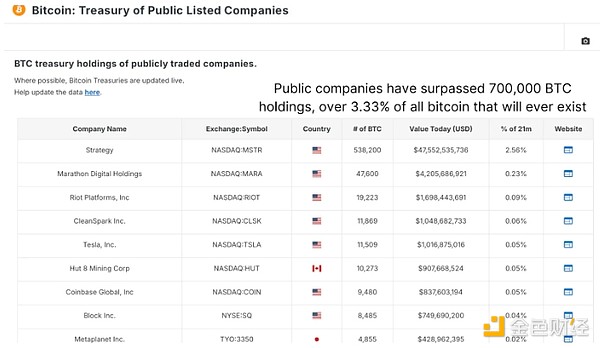
Figure 1: Top BTC holdings of listed companies.
In addition to Bitcoin directly held by companies, we can see from the EFT cumulative flow (BTC) chart that ETFs also control a considerable portion of the market. As of the time of writing, spot Bitcoin ETFs hold approximately 965,000 BTC, just under 5% of the total supply. This number fluctuates slightly, but it remains a major force affecting daily market dynamics. If we combine corporate treasuries and ETF holdings, the number climbs to over 1.67 million BTC, or about 8% of the theoretical total supply. But there’s more to the story than that.
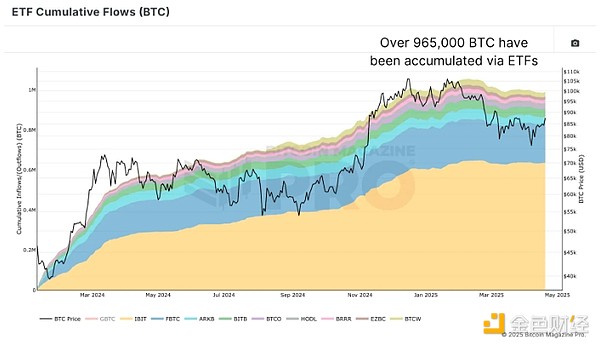 Figure 2: ETFs have increased investor interest in holding BTC.
Figure 2: ETFs have increased investor interest in holding BTC.
In addition to Wall Street and Silicon Valley, some governments are now active in the Bitcoin space. Nation states hold a total of approximately 542,000 Bitcoins through sovereign purchases and strategic Bitcoin reserves. Adding previous institutional holdings, we get to over 2.2 million Bitcoins held by institutions, ETFs, and governments. On the surface, this is about 10.14% of the total Bitcoin supply of 21 million.
Forgotten Satoshi and the Lost Supply
Not all 21 million BTC are accessible. Based on estimates from the “10+ Year HODL Wave” data, which measures coins that have not moved in a decade, over 3.4 million BTC may be lost forever. These include Satoshi Nakamoto’s wallet, coins from the early mining era, forgotten phrases, and even USB sticks in landfills.
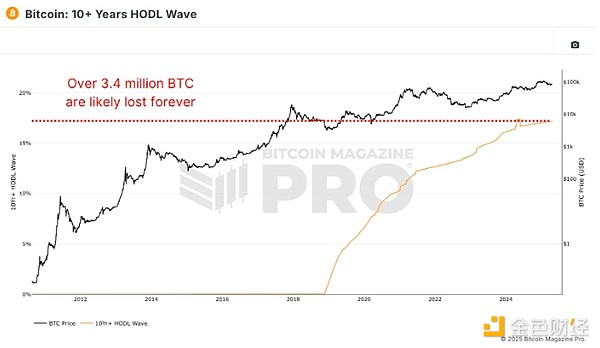
Figure 3: It is conceivable that the number of lost BTC exceeds 3.4 million.
There are currently about 19.8 million BTC in circulation, and it is estimated that about 17.15% has been lost, so the actual supply is closer to 16.45 million. This completely changes the current balance. Measured in more realistic terms of supply, the percentage of BTC held by institutions has risen to about 13.44%. This means that for every 7.4 BTC on the market, about 1 has been locked up by an institution, ETF, or sovereign state.
Are Institutions Controlling Bitcoin?
Does this mean that Bitcoin is being controlled by corporations? Not yet. But it does indicate their growing influence, especially in terms of price action. Looking at the S&P 500-Bitcoin Correlation chart, Bitcoin's correlation with traditional stock indices like the S&P 500 or Nasdaq has clearly increased. As these large entities enter the market, BTC is increasingly seen as a "risk-on" asset, meaning its price tends to fluctuate with changes in investor sentiment in traditional markets.
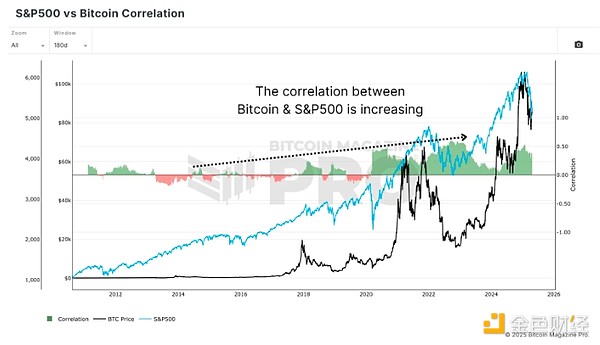
Figure 4: Bitcoin's correlation with the S&P 500 continues to grow.
This can be beneficial in a bull market. When global liquidity expands and risk assets perform well, Bitcoin is now expected to attract larger inflows than ever before, especially as pensions, hedge funds and sovereign wealth funds begin to allocate even a small portion of their portfolios. But there is a trade-off. As institutional adoption deepens, Bitcoin becomes more sensitive to macroeconomic conditions. Central bank policy, bond yields and stock volatility all begin to matter more than before.
Despite these changes, more than 85% of Bitcoin is still out of institutional hands. Retail investors still hold the vast majority of Bitcoin supply. While ETFs and corporate vaults may be hoarding large amounts of Bitcoin in cold wallets, the market remains highly fragmented. Critics argue that the usefulness of on-chain data is waning. After all, if so much BTC is locked up in ETFs or dormant wallets, can we still draw accurate conclusions from wallet activity? This concern is valid, but not new.
The Need to Adapt
Historically, the majority of Bitcoin trading activity has occurred off-chain, particularly on centralized exchanges like Coinbase, Binance, and (once upon a time) FTX. These transactions rarely appear on-chain in a meaningful way, but still influence price and market structure. Today, we face a similar situation, only with better tools. ETF flows, corporate filings, and even state purchases are subject to disclosure regulations. Unlike opaque exchanges, these institutional players are often required to disclose their holdings, which provides analysts with a wealth of data to track.
Furthermore, on-chain analytics are not static. Tools like the MVRV-Z score are constantly evolving. By narrowing the focus to the 2-year rolling average of the MVRV Z score instead of full historical data, we can better capture current market dynamics without being affected by long-lost tokens or inactive supply.
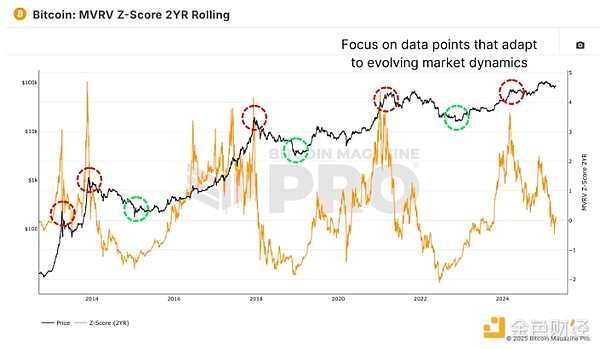
Figure 5: A more targeted 2-year rolling MVRV Z score can better capture market dynamics.
Conclusion
In summary, institutional investor interest in Bitcoin is at an all-time high. Between ETFs, corporate bonds, and sovereign entities, Bitcoin holdings now exceed 2.2 million and growing. This influx of funds has undoubtedly helped stabilize prices during periods of market weakness. However, this stability has also brought some entanglements. Bitcoin’s growing ties to the traditional financial system have also increased its correlation with stocks and broader economic sentiment.
However, this does not mean the end of Bitcoin decentralization or on-chain analysis. In fact, as more BTC is held by identifiable institutions, the ability to track fund flows will become more precise. Retail investors still dominate, and our tools have become smarter and more responsive to market changes. Bitcoin’s decentralized ethos is not threatened, it is just maturing. As long as our analytical framework evolves along with Bitcoin, we will be better able to respond to any future changes.
 Weatherly
Weatherly










